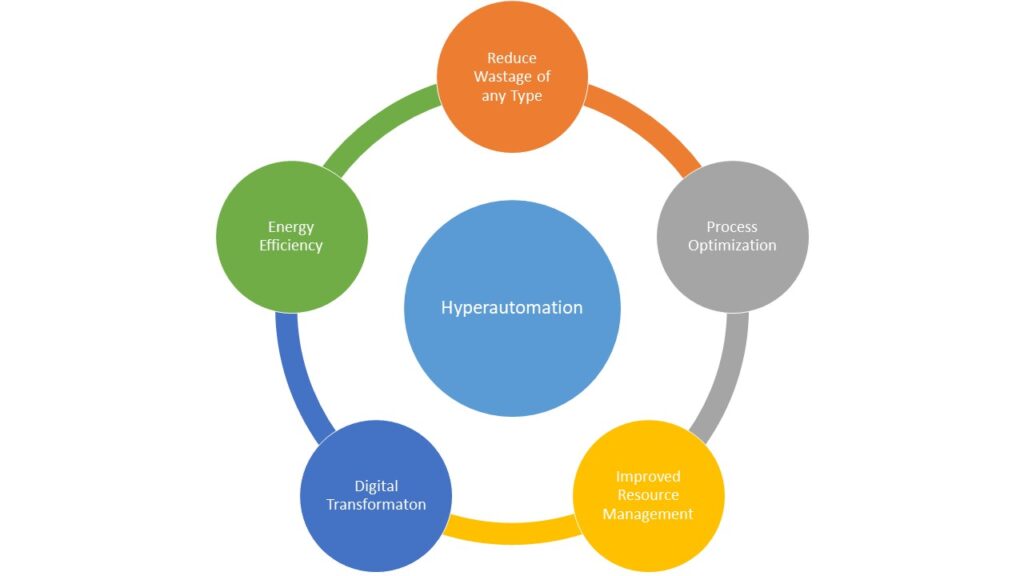
In today’s world, enterprises are trying to keep up with ambitious sustainability goals . To understand and build that integrated technology require systematic approach of transformation. Some companies are targeting to achieve these goals by reducing CO2, while other companies paying more attention to environment, social and governance (ESG) issues that are very critical for all industry sectors. The role of tech industry goes beyond buzzword “Green”, while company leadership must introduce game-changing technology solutions and digital mindset of meeting sustainability goals.
Hyperautomation along with the high level of collaboration across organization has the potential to help reduce carbon footprints by automating and optimizing business processes, reducing paper usage, and improving energy efficiency. Here are some ways Hyperautomation can contribute to reducing carbon footprints:

Reduce wastage of any type: Wastage has many forms such as time, money, resources, raw material, procurement, machine capacity, budget, business opportunities and learning and development opportunities. By embracing Hyperautomation, we improve waste reduction thereby gaining bottom line and sustainability goals.
Process optimization: By automating and optimizing business processes, Hyperautomation can help organizations reduce waste, lower energy consumption, and decrease carbon emissions. For example, automating supply chain and logistics processes can help reduce transportation-related emissions.
Energy efficiency: Hyperautomation can help organizations improve energy efficiency by reducing the need for manual labor, which often requires energy-intensive processes. For example, automating manufacturing processes can help reduce energy consumption and lower carbon emissions.
Digital transformation: Hyperautomation can help organizations move towards a paperless digital environment, reducing the use of paper and other materials. By digitizing documents and processes, organizations can reduce their environmental impact and lower their carbon footprint.
Improved resource management: Hyperautomation can help organizations optimize resource management, such as reducing energy usage in buildings and improving water usage. By automating processes that control building energy consumption, Hyperautomation can reduce the amount of energy used by buildings, helping to lower carbon emissions.
Overall, Hyperautomation can contribute to reducing carbon footprints by helping organizations become more efficient, optimizing processes, and reducing waste. By leveraging Hyperautomation to reduce their environmental impact, organizations can not only benefit the environment but also enhance their reputation and social responsibility.
